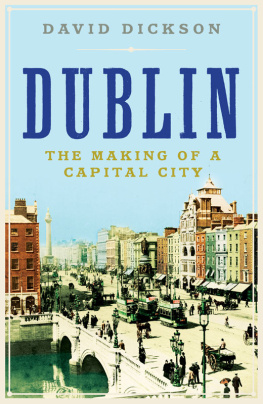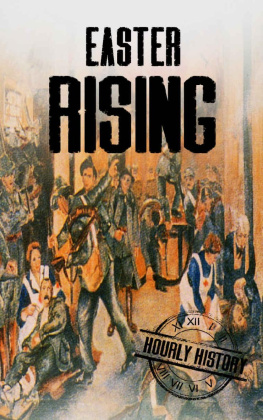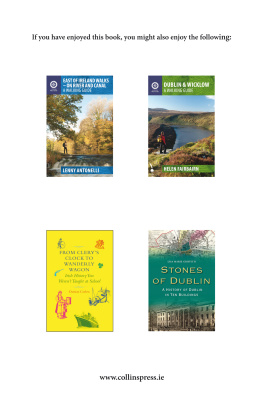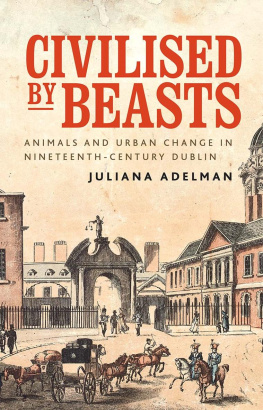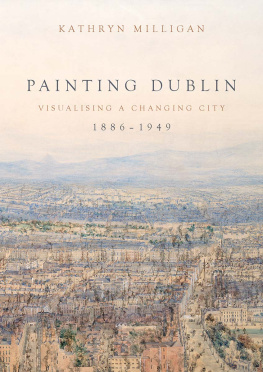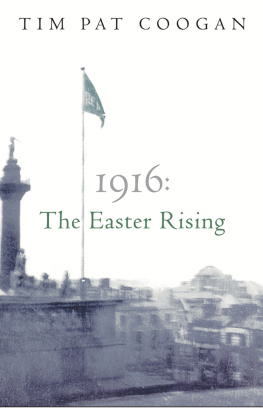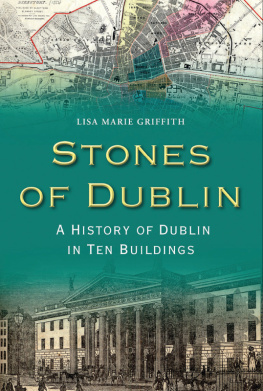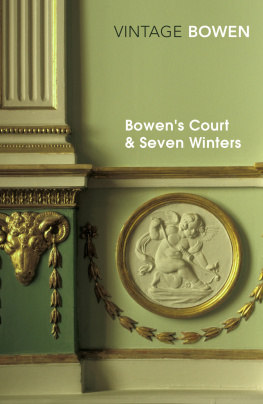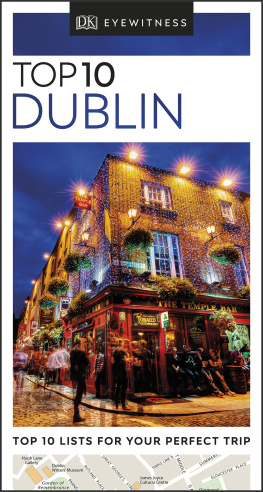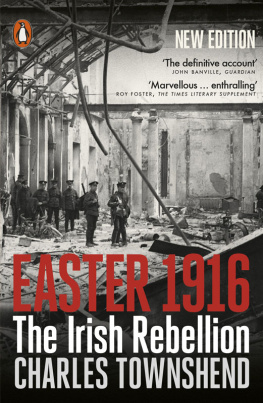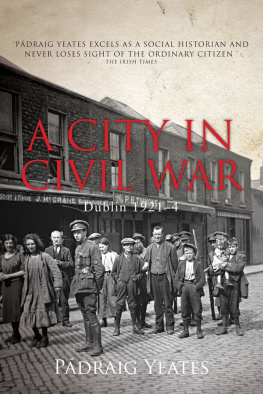DUBLIN
DAVID DICKSON is Associate Professor of History at Trinity College, Dublin and has published extensively on the social, economic and cultural history of Ireland. He was elected a Member of the Royal Irish Academy in 2006.
DUBLIN
THE MAKING OF A CAPITAL CITY
DAVID DICKSON

First published in Great Britain in 2014 by
Profile Books Ltd
3a Exmouth House
Pine Street
Exmouth Market
London ECIR OJH
www.profilebooks.com
Copyright David Dickson, 2014
The moral right of the author has been asserted.
All rights reserved. Without limiting the rights under copyright reserved above, no part of this publication may be reproduced, stored or introduced into a retrieval system, or transmitted, in any form or by any means (electronic, mechanical, photocopying, recording or otherwise), without the prior written permission of both the copyright owner and the publisher of this book.
A CIP catalogue record for this book is available from the British Library.
eISBN 978 1 84765 056 6
For Charlie and Tom
CONTENTS
PREFACE
N o city exists in the present tense, wrote James Stephens, Dublin journalist and poet in 1923, it is the only surviving mass-statement of our ancestors, and it changes inversely to its inhabitants. It is old when they are young, and when they grow old it has become amazingly and shiningly young again. The city of Dublin in the Celtic Tiger years (c.1995c.2007) was a city of youthful excess, manic and present-centred. Yet it was framed by a soft historical narrative, which became integral to the commercial branding of its identity. Dublins history was packaged and commodified as never before. Amiable tour guides enlarged on the rare ould times, more artful purveyors of cultural tourism invoked the world of Joyces Leopold Bloom, and the city government celebrated the citys history and championed its physical and literary heritage.
But what constitutes the city? Is Dublin merely the territory ruled from the Civic Offices? That would exclude many districts that have been entirely urban since the mid-nineteenth century, and many more that have been urbanised in the twentieth. Does Dublin mean the whole urbanised area, stretching nowadays from Malahide in north County Dublin to Bray in County Wicklow and westwards to Leixlip in County Kildare? This million-strong city is politically quite fragmented and at present straddles six county councils. And there is an even bigger Dublin in the form of the metropolitan city-region the commuting zone be it to work, to school, or to recreation.
The problems of identifying Old Dublin are rather different. They are not so much where was Dublin, but what was Dublin. The city has attracted many labels, Viking, Norman, English, Protestant, Georgian, nationalist and republican, but such labels have nearly always oversimplified. Incontrovertibly, Dublin has been the biggest urban place in a deeply contested island since towns first appeared west of the Irish Sea. For seven centuries it was the epicentre of English power and for much of that time it was the principal channel of anglicisation. But the city has also provided shelter and opportunity for radical challenges to that power. It was therefore at different times a colonial fortress and a contested space. There have been many other contested cities in the European and Mediterranean world, some of which have suffered much harsher histories than Dublin (be it Prague or Knigsberg/Kaliningrad, Smyrna/Izmir or Algiers). And unlike many cities of Britain and western Europe, Dublin almost escaped the devastating effects of industrial warfare in the twentieth century. But in the longer run there have been much sharper discontinuities and reverses in Dublins history than in almost any other European capital city and these have left their mark. Yet, like all great cities, Dublin has been a cultural hybrid and that hybridity has shaped its creative history, even though cultural differences have at times been a source of bitter tension, even of bloody conflict.
Dublin has also had the reputation of being a city divided to an extreme degree by class and material wealth, an arena for Neapolitan excess and unspeakable poverty. Again, the story is more complex. The city has been centre of social and economic innovation within Ireland, but at times of change it was also an economic battlefield, suffering as a result of its metropolitan status and the strength of vested interests working within it. A century ago it had the largest brewery in the world, with quite exceptional welfare arrangements for its employees, at the same time that the housing of the citys labouring classes was an international scandal and excessive alcohol consumption was a near-universal problem.
The ambiguities and paradoxes were never so evident as in the epoch-changing years between 1916 and 1922. The Easter Rising that convulsed a war-weary city in April 1916 was a bolt from the blue. The insurrection initially lacked popular support. Yet within a year public opinion had shifted and substantial segments of Dublins citizenry supported the aggressive pursuit of separatism. Less than three years later, Sinn Fin, the champions of separatism, were able to hold a national convention (the first Dil) in an annex to the Lord Mayors house. The ensuing guerrilla campaign that took place across much of the country and the British resistance to that campaign were both albeit in varying degrees run from the city, even though most of the action took place far outside the Dublin region. Much of the political drama in 1921 surrounding the Anglo-Irish Truce and Treaty was also acted out primarily within the city of Dublin.
Then in January 1922 came the handover of Dublin Castle, the symbol of English ascendancy in Ireland since the twelfth century. Between the twelfth and the twentieth centuries Dublins fortunes had flowed and ebbed with English ascendancy. Could the city now reinvent itself in 1922 as an Irish-Ireland capital for the first time? Five months after the formal handover of power came civil war. In the first act of a short but vicious conflict, the Public Record Office of Ireland, beside the Dublin quays, was destroyed, following the bombardment of the Four Courts complex. Seven centuries in the making, the central archives of English governance of Ireland were lost in a couple of hours.
The year 1922 also witnessed the appearance of a unique literary text. Seven years in the making, James Joyces little story of a day, set in pre-war Dublin but echoing Homers Odyssey, was published in Paris. Its initial local reception was furtive and disapproving and its global impact slow in coming, but long before the end of twentieth century Ulysses had been accepted as one of the canonical texts of modernism. That moment in Dublins imagined history thus became utterly familiar to every student of modern English literature and Dublin itself became a distinctive corner of the global cultural landscape. It was quite an irony that the year when Joyce universalised the city was also the time when the potential to explore its deeper history was catastrophically diminished by the PRO fire.
There were, however, two projects at that time which opened up the history of Dublin. The first was the publication of Calendar of the ancient records of Dublin; this had begun in 1889, and the nineteenth and final volume appeared in 1944. Edited by Sir John Gilbert and his widow, the Calendar provided a critical edition of the assembly rolls that recorded the formal decisions of the citys governing body, running from 1447 down to the reconfiguration of city government in 1840. These parchments, together with other key municipal archives, were unaffected by the PRO fire, but their full-scale publication was a rare acknowledgement by the then nationalist local government of the citys deep and complex history. Gilbert had written an innovative history of the city in the 1850s and remained a passionate champion of archives, their protection and publication; he had been a key advocate for the professional protection of the citys records and for the establishment of an Irish Public Record Office. The other
Next page
